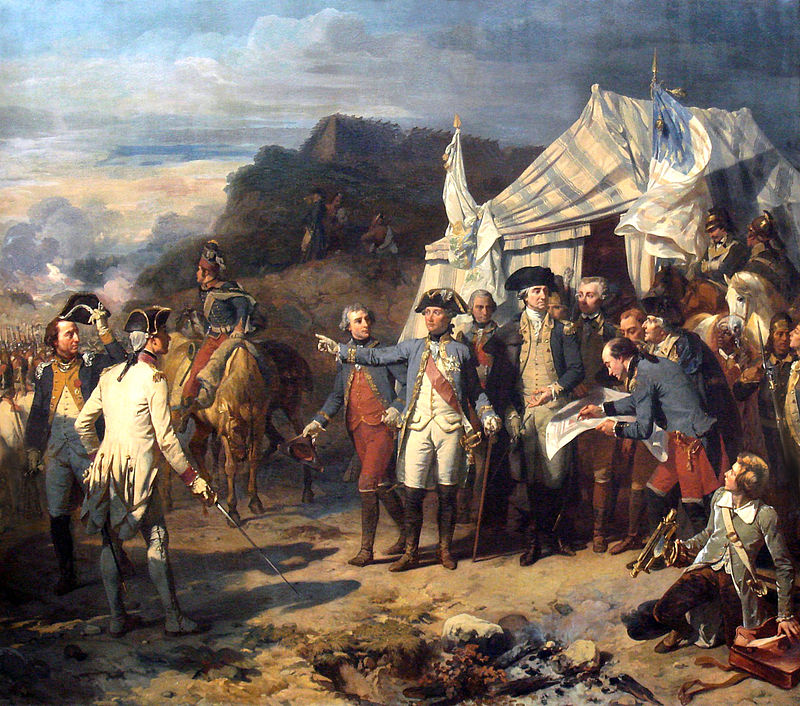September 28 in U.S. military history
1781: Gen. George Washington leads a combined army of 8,000 Continentals, 7,800 French soldiers, and 3,100 Colonial militia out of Williamsburg (Va.) to the newly constructed trenches surrounding Lt. Gen. Lord Cornwallis’ trapped British forces at Yorktown, beginning the siege that will effectively bring an end to the American Revolution.
1787: After putting the finishing touches on the Constitution of the United States, the Continental Congress sends copies out to the states for ratification.
1918: After two brutal days of fighting in the Argonne Forest, Maj. Oscar F. Miller of the 361st Infantry Regiment rushes to the front of his battalion and personally leads the formation across open ground against prepared enemy positions. Miller encourages his men as they face down withering machine gun fire and direct artillery. Miller is shot through the leg, but he continues on. Then he is shot through the arm. Still, he pushes his men forward. He is shot a third time, in the abdomen, and cheers his men onward and orders them to leave him behind.
Maj. Miller will die of his wounds and is one of three soldiers to earn the Medal of Honor for actions on this day alone. The other two are 1st Lt. Dwite H. Schaffner of the 306th Infantry and Cpl. Freddie Stowers of the 371st Infantry.
1924: Two Douglas DT-2 biplanes land at Sand Point, Wash., completing the U.S. Army Air Service’s 175-day, 27,553-mile journey, marking the first ever aerial circumnavigation of the globe.
1941: A day after the Imperial Japanese Navy changes their communication codes, officer-in-charge of Pearl Harbor’s cryptology section Capt. Joseph J. Rochefort warns commanders that he believes the switch could indicate a major operation.
1945: Gen. Dwight D. Eisenhower relieves Gen. George S. Patton, Jr. of his post as military governor in Bavaria following controversial statements about the de-nazification process. Next month, Eisenhower transfers Patton from his beloved Third Army to lead the Fifteenth Army, a relatively small staff responsible for compiling a history of the European War.
1964: The Lafayette-class ballistic missile submarine USS Daniel Webster departs Charleston (S.C.) Harbor, becoming the first ship to deploy with the new Polaris A3 missiles. The A3 carries three 200-kiloton warheads with a maximum range of 2,500 nautical miles. When the USS Daniel Boone joins the Pacific Fleet in December, American nuclear missiles can now target anywhere on the entire Eurasian landmass.
2001: President George W. Bush declares that American combat forces are in “hot pursuit” of those responsible for the 9/11 attacks, while the Pentagon adds that American and British special operations forces have deployed to Afghanistan.
2012: Contrary to the Obama Administration’s narrative that the deadly attack on the U.S. Consulate in Benghazi was a spontaneous protest over a YouTube video, the Office of the Director of National Intelligence announces that it was in fact a “deliberate and organized terrorist attack.”
Featured image: Auguste Couder’s Bataille de Yorktown
